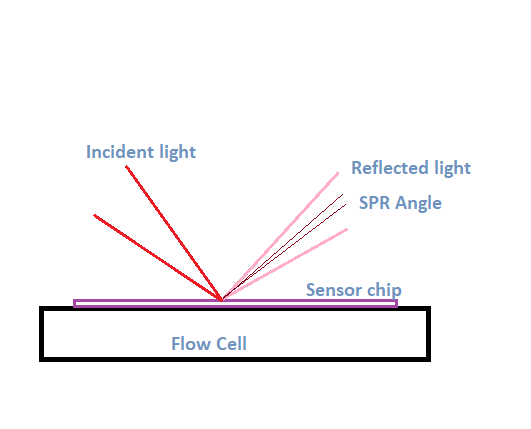When monochromatic polarized light for instance, from a laser source impinges on a transparent medium having a conducting metallized surface (e.g. Ag or Au), there is a charge density oscillation at the interface. When a light at an appropriate wavelength interacts with the dielectric-metal interface at a defined angle, called the resonance angle, there is a match of resonance between the energy of the photons and the electrons at the metal interface. As a result, the photon energy is transferred to the surface of the metal as packets of electrons, called plasmons, and the light reflection from the metal layer will be attenuated. This result in a phenomenon called Surface Plasmon Resonance (SPR).

The resonance is observed as a sharp dip in the reflected light intensity when the incident angle is varied. The resonance angle depends on the incident wavelength, the type of metal, the polarization state of the incident light, and the nature of the medium in contact with the surface. Any change in the refractive index of the medium will produce a shift in the resonance angle and thus provide a highly sensitive means of monitoring surface interactions.
Surface Plasmon Resonance is generally used for sensitive measurement of variations in the refractive index of the medium immediately surrounding the metal film. For instance, if an antibody is bound to or absorbed into the metal surface, a noticeable change in the resonance angle can be readily observed because of the change of the refractive index at the surface if all other parameters are kept constant. The concept offers an improved ability to detect the direct interaction between antibody and antigen as an interfacial measurement.
Related: What is a Biosensor?

Leave a Reply
You must be logged in to post a comment.